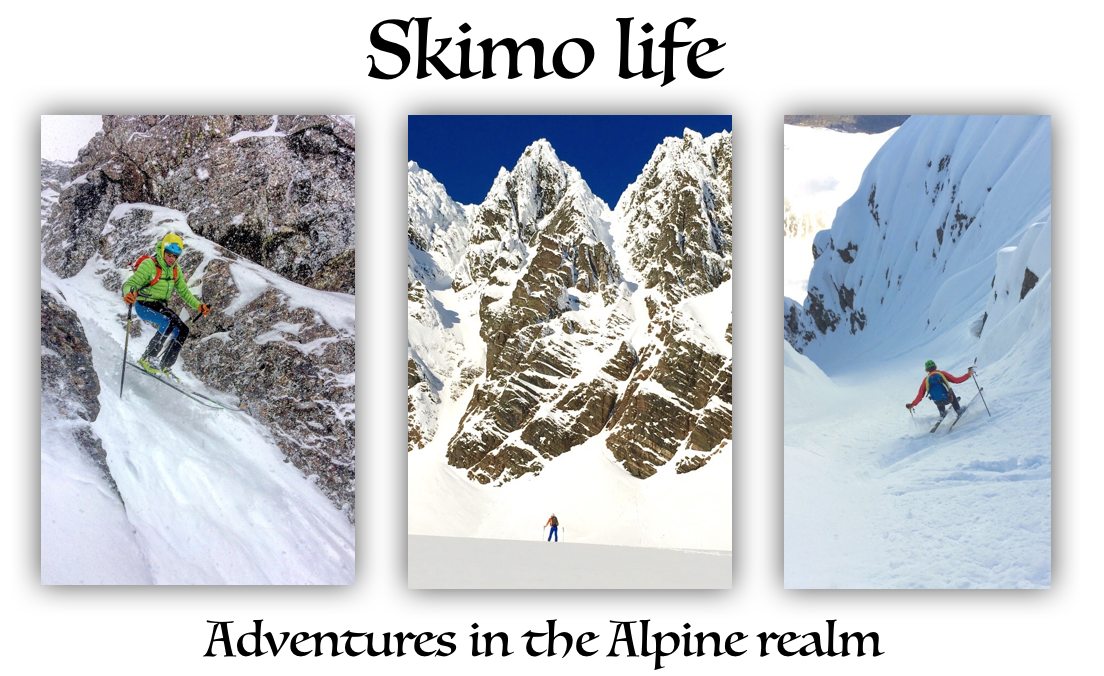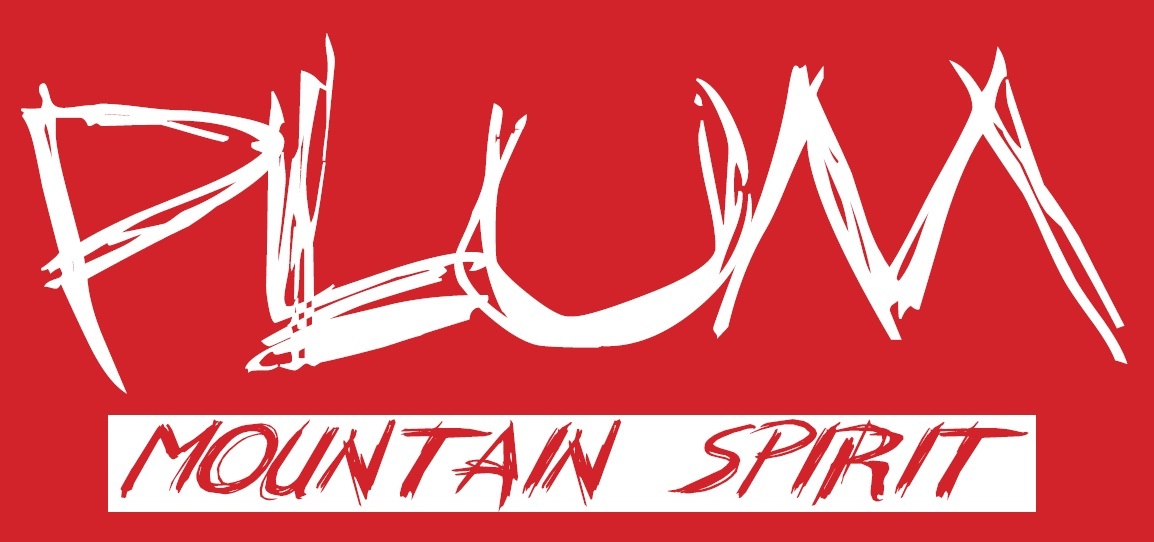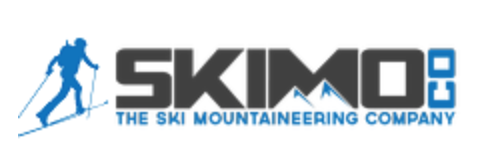Distractions - Binding Inserts
 Tuesday, February 3, 2015 at 05:39PM
Tuesday, February 3, 2015 at 05:39PM Mat enjoying his new distractionWell, January 22nd came and the snow finally started falling in South Central AK. Truth be told, it's been snowing plenty above 2,500 feet but the more common haunts have been hurting. The telling indicator is that I'm ice climbing again. Fun but seems so much scarier and dangerous than skiing. Good for my head, though. But the arrival of the a real winter storm and cold temps, "grumpy Brian" was replaced with "hopeful/psyched Brian". That's a good thing for the people I work with. I was giddy all day.
In spite of my ice climbing adventures, skiing is what a truly love so I've been busy doing skiing related things like buying elaborate ski tuning equipment and learing how to really dial in my quiver. For someone as OCD as me, ski tuning is extremely fun and satisfying. I bought a condo recently with a heated garage so I'm no longer doing the deed in my living room. Better still.
 I want to give a serious shout out to Terry at Slidewright.com for carrying everything I need to obsess over the condition of my boards and being willing to give free advice on my many lame quesitons. In addition to carrying everything you need to develop your World Cup tuning chops, Terry has a blog with detailed instructions and videos to get most of the tasks done. I encourage everyone to pay a visit to the site but be prepared with your credit card as a frenzy of product acquisition will likely follow if you're anything like me.
I want to give a serious shout out to Terry at Slidewright.com for carrying everything I need to obsess over the condition of my boards and being willing to give free advice on my many lame quesitons. In addition to carrying everything you need to develop your World Cup tuning chops, Terry has a blog with detailed instructions and videos to get most of the tasks done. I encourage everyone to pay a visit to the site but be prepared with your credit card as a frenzy of product acquisition will likely follow if you're anything like me.
Binding Insert Mania
One of my long time friends and guide buddy, Pat Ormond, who came to visit me in Chamonix during some downtime while guiding the Haute Route and Ortler Traverse last spring turned me onto some cool ski gadgetry that I've been thinking about ever since - binding inserts. Pat showed up with a couple of pairs of boards, one devoid of bindings and he proceeded to quickly switch them over while squatting on the floor of my flat. These little puppies have been part of the snow board scene for years as they allow the frequent changing of position of snow board bindings required to dial in your ride. Some time ago, someone decided that the technology could be applied to touring skis, affording some distinct advantages that interested me.
First, the primary reason that inserts have gained traction is that they permit unlimited switching of bindings from ski to ski allowing one to acquire a significant quiver of boards without having to match each pair with expensive bindings. The inserts use machine screws that make switching bindings fast and easy.
Next, the pull out strength, with their greater surface area and epoxy glue in, is far higher than typical wood screw configuration of normally mounted binders.
Better yet, when traveling with a ski bag, easily removing the bindings minimizes the space required for your skis and eliminates much of the damage potential of both skis and bindings when carried separated from each other.
So, it was with all these factors in mind that I stepped up to the plate with Slidewright and purchased what I needed for the task. There are a couple of producers of inserts, Binding Freedom and Quiver Killer, both of which seem to be interchangeable. Terry at Slidewright sells Binding Freedom.
Personally, I think the first thing you need to get this job done is some intestinal fortitude and a williness to drill BIG holes in your expensive skis. Make no bones about it, this process is committing but thrilling at the same time. And if you have any craftsman in you, it's super satisfying once the job is done.
I'm not so bold (yet) to mount my own bindings so I recommend that you start with previously mounted skis and simply overdrill and tap the existing holes. This usually works out fine and makes for an easy transition.
WARNING: Binding inserts with machine screws have far tighter tolerances than wood screw mounted bindings. This means that if your original mount was not done with a certain amount of precision, your inserts may be off enough to prevent you from remounting your bindings with the inserts in place. This would be, ummm....disappointing. I'll share with you a trick here that can mitigate some of this mismatch.
Tools
There's no substitute for proper tools when doing something like this on expensive toys. Why would you wing ding this project on your $1,200 powder skis? Don't. Get the right stuff and proceed with confidence and precision.
In truth, you don't need too much. Start with a standard power drill. You'll need this to overdrill the screw holes. Next, the proper bit is fitted with a drill stop so you don't go flying through your skis on your way to penentrating your ski bench. You'll want to be drilling square to the ski so a drill guide is key here.A countersink is a nice touch to clean up the holes allowing for smooth entry into the holes. Next would be a thread tap to set the stage for the inserts.
An inserter for the inserts is handy and there are two types that do the job. A long set epoxy like Hardman Blue with it's long working time is nice and gives you time to fuss around without the additional panic induced by quicker setting glues.
A clamp or two to steady the drill and tap guide is handy. That's about it.
Once the original screws and bindings are removed, I like to plane off the top sheet material that always protrudes around the screw holes. I've used the Ski Visions Ski Base Flattener or a standard window scraping razor blade to do the job cleanly. Follow this up with a few turns of the counter sink on power and the hole should be nice and clean.
Next, set up the insert drill with the drill stop set appropriately with the thickness of the drill guide in mind, of course. The hole should be 9.5mm deep. A caliper is nice to help dial this in. After drilling, use the same guide with a larger hole and run the tap down, cutting the threads with steady, even pressure and being sure not to over tap once bottomed out. This will shear the threads.
I then clean the top of the holes again with the countersink and retap the first few threads to be sure they're totally clean. I finish by shop vacuuming out the holes so they're completely free of debris.
Now the fun part. Mix the epoxy and, using a tooth pick, coat the internal threads and the bottom of the holes with adhesive. I then mount the insertion tool onto my tap handle and poise an insert on top. This allows me to then coat the threads of the insert with more epoxy. Don't go crazy here as too much adhesive just gets spit out the hole, threatening to clog the internal insert threads and making a mess on the top sheet.
Prior to installing the inserts, I typicall soak them in a little Simple Green and rinse thoroughly and then air dry. This gets any greasy contaminants off the inserts so the bond is good.
Once the insert is ready to install, simply invert the inserter and poise the tip of the insert squarely on the opening. The first few turns should go easily. Be sure not to cross thread. Mental tension is typically high at this point. Turn the insert until it is just flush or slightly below. Wipe off any excess epoxy as you turn it down so that it doesn't slop over into the insert's screw hole. Once all four are in I typicall use a rag and wipe off all excess adhesive. It can continue to ooze out over the following few minutes after the inserts are down.
Now for the little trick for mismatched holes. Using the appropriate length machine screws designed for the inserts, loosely mount the binding. By keeping them loose it's often possible to tweek the binding in order to get each screw to cleanly engage. Once all four are started, alternately tighten each screw a few turns at a time until all are just snug. Don't over tighten. This technique may clean up some of the mismatch by redirecting the insert ever slightly. Let the epoxy set for 24 hours.
Update
In the comments below you'll see some handy advice related to hole mismatch. Certainly, tweeking the front binding as described above might solve one problem but could potentially create a malaligned boot/heel pin situation in the back. Indeed, this is exactly what I have in one of the skis used for this post. I noticed some difficulty stepping in a couple of times and now I know why. The degree it's off is not unworkable but the situation brings to light another potential issue of these handy additions to your quiver.
I'm thinking the next time I mount some I'll drop the boot into the binding and let the epoxy cure with the boot in place. This may, again, tweek things just enough to correct small errors in alignment. I'm curious if any readers have comments on this idea. Please leave them below.
The next day, remove the bindings and check your work. I clean up the top sheet around the holes with a flat file as the epoxy is quite hard. Now with the screws coated with some Vibra Tite thread locker, remount the bindings with a snug, firm hand tight. You're ready to rip.
 Brian |
Brian |  8 Comments |
8 Comments |  Binding Freedom inserts,
Binding Freedom inserts,  Slidewright in
Slidewright in  Gear
Gear 





Reader Comments (8)
Hey there, nice write up! An important point to add comes when the glue is still drying-- this is when you should put a boot in the binding and make sure that the toe is "true" relative to the heel pins-- the boot can be your guide.
Small angle changes at the toe can translate into relatively big changes at the heel, and if you're too far off, it could be hard to get in/out of the binding, and it just won't function properly. I true the toe and then carefully remove the boot before overnight curing.
Cheers! Patrick
Great point, Patrick. Actually, on these skis I noticed some difficulty getting in at one point on a steep line. I assumed it was because the ski was heavily flexed as I was getting in and the binding was hitting the boot heel in the shortened position. But now that bring up this point, I checked and one toe is askew. Interesting. Not much I can do about it now, of course.
I wonder if leaving the boot in the binding while curing wouldn't be the best solution.
Hi Brian,
Those are nice skis. Yeah, I imagine it would take some big balls to mount your own bindings on those skis...at least if you were just starting.
So what do you imagine swapping out on these? Keeping the same toe piece but then switching out beefier heel pieces like say a Plum guide for a Plum Race heel-piece? I like the idea but just trying to figure out how I could use this to my advantage.
Thanks.
Josh
Hey Josh,
For me the advantages mainly pertained to travel, allowing me to remove the bindings on multiple skis creating better packing and less damage potential. Secondly, I don't have to buy another pair of bindings for these skis and, instead, just swap a pair from another set of boards.
Welcome to the Inserts Anonymous club! I joined about two-three years ago and it is very, very dangerous - stay away if you can. I seriously was just installing on some skis an hour ago.
Don't whatever you do, tell your friends you have discovered this skier version of fire - they will want you to install inserts for them and there is a reason that shops charge up to $100 per pair of skis for inserts. A six pack doesn't come close to even covering the hardware costs, not to mention all the tools and time. Your friends don't know about this blog right? :-)
In addition to the advantages you mentioned, here are a few more:
1) Allows mounting a non-adjustable race-style AT binding on the same ski for two different BSLs
2) Allows me to mount most of my skis for both AT and tele bindings (so awesome)
3) Allows me to swap heels if a Vertical breaks (wait, Dynafits break, what are you talking about??)
3) Allows me to mount and remove accessories like B&D crampon mounts or F1/F3 shims (old F1 with the bellow) and remove when I don't need
4) Allows me to spend even more time in the man cave (garage) screwing with ski stuff (my wife added this one, aint true! OK, OK, inserts are super fun)
My pointers:
1) Start on a dumpster ski or 2x4. It aint rocket science but it aint super easy too
2) Put the thread locker on the bottom 1/4" of the screws and let dry overnight and use later. When wet, thead locker it is messy, could melt plastic (if not using the right type) and when wet can come off within the binding plate before it hits the insert. You don't need fresh locker every mount, just some on the threads and dry is fine.
3) Buy a plastic organizer box and get ready to buy lots and lots of screws of different lengths and head types. A few years ago when inserts (both Binding Freedom and Quiver Killers) were M5 with hex heads, I could buy extras at Tacoma Screw. Now, thankfully, both companies have moved to pozi drive heads (super easy to strip the little hexes) but that means I have buy from those companies and the "community derived" screw length/type tables are not always right so you may end of buying screws a few times.
4) I prefer Binding Freedom because they have slots cut into the insert head in case you need to extract but their tools are really cheap. I hate cheap tools. A large flat head screw driver may work better than the insert installer bit.
Good stuff and thanks for the blog!
Hey Doug,
Thanks for chiming in. Had me laughing for sure. I love it when guys get my sense of humor when they don't even know it. Nice work.
Those are all good reasons to become a member of IA, for sure. Such a funny but true concept. Yes, you truly understand my problem. It's a relief to know there are others like me.
There's a part of me that wants to offer the service to friends as I love the process of installing them (at least for now). But with the sometimes complication possibility, I'm probably not going to offer too loudly. On the other hand, if I got good at mounting bindings from scratch, I would trust that I could get things to line up fine. But that's another skill to develop still. For now, I depend on the previous ski tech to get it right and we know that doesn't always work out.
I second your sentiment about the BF installer. Seems like it will break down eventually. On the other hand, it does make it easy to steady the insert while applying epoxy to the threads. I have this idea to take the blocking nut style inserter and mount it on a handle to allow better control for glue application and insertion. I'll report back if it works well.
One trick that I mistakenly learned is to be very cautious of countersinking holes after tapping. Sometimes it can be more difficult than you'd expect to keep the threads clean for the insert installation. This caused me some serious heart burn on a pair of Voile Drifters.
I hear you, John. Actually, after that final counter sinking just to clean up the rim I run the tap a few turns down one more time to hopefully avoid the heart burn you faced. Thanks for the tip, though. It's never a relaxing project but oddly fun, nonetheless.